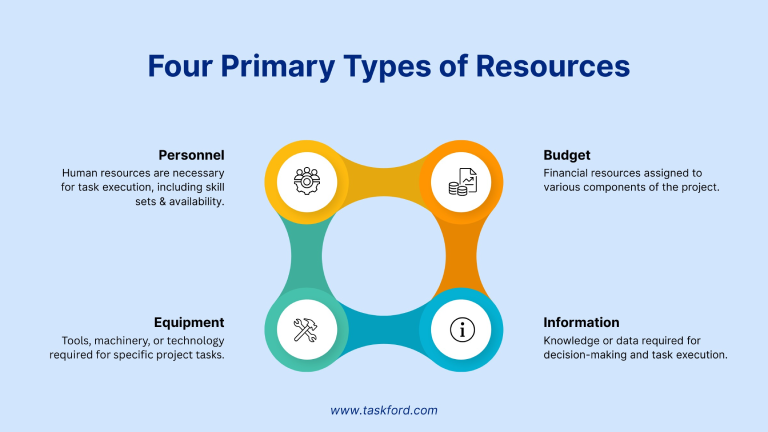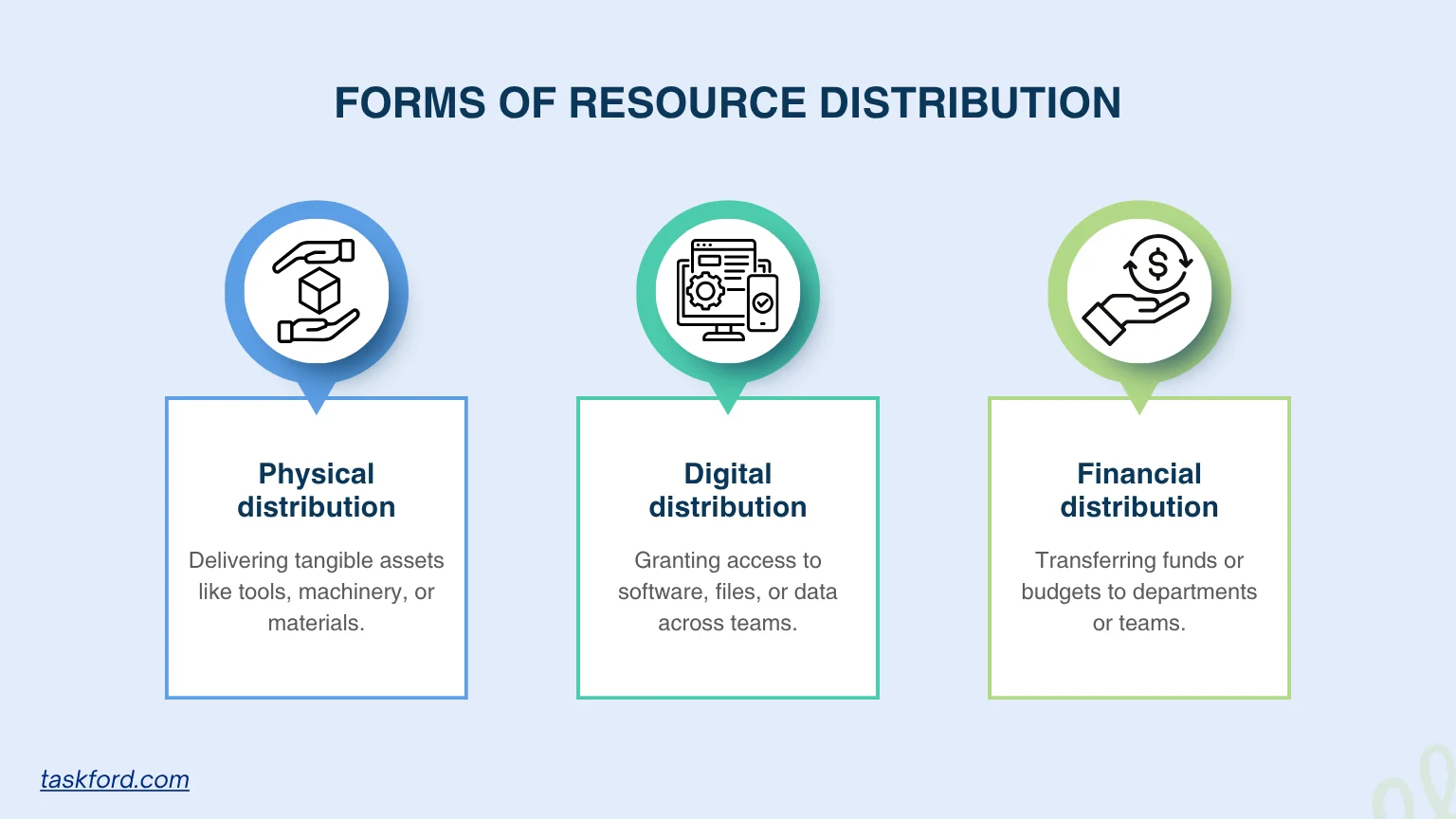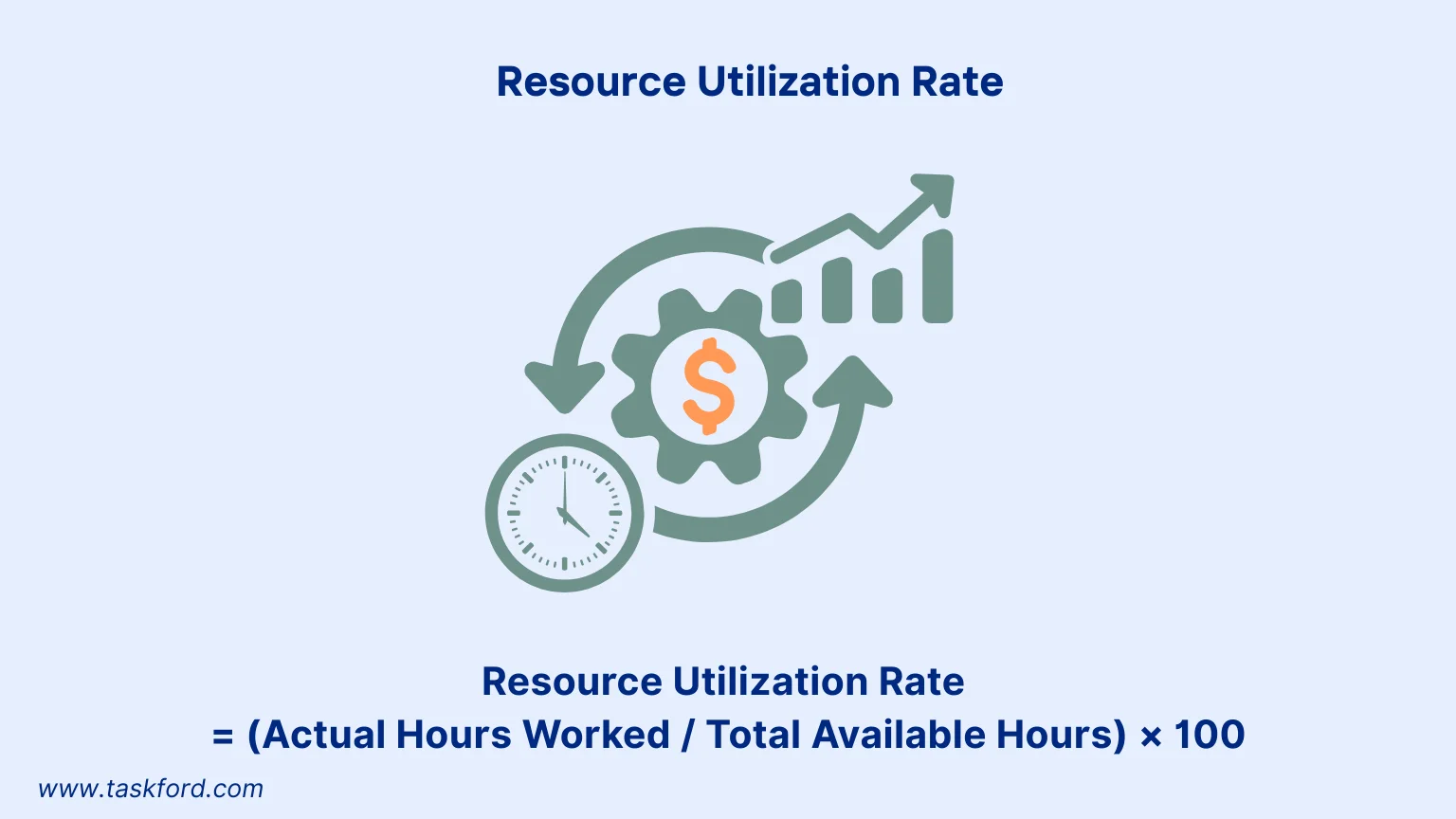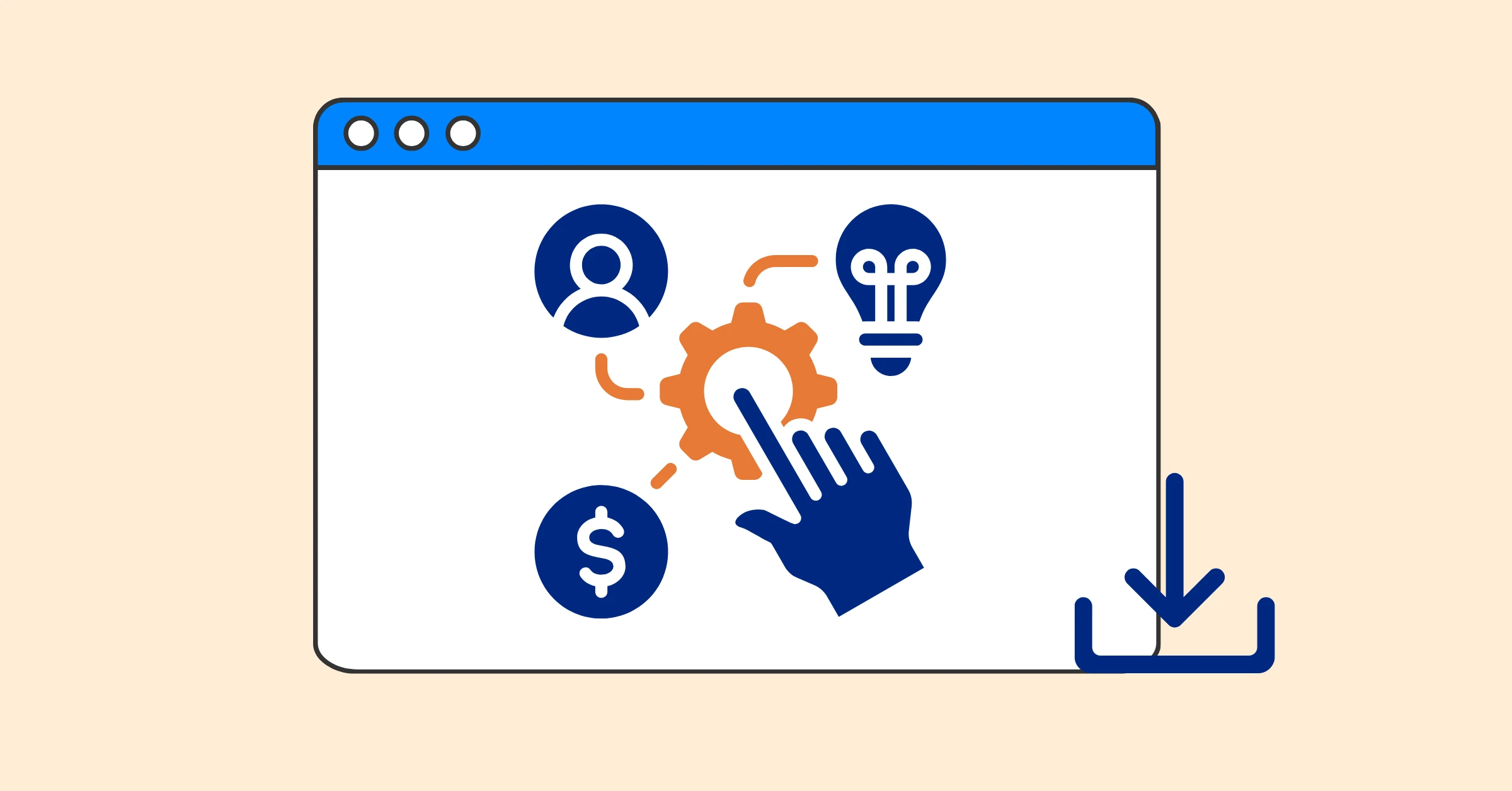Resource Distribution vs. Resource Allocation: What’s the Difference?
Learn the key differences between resource distribution and resource allocation, and how mastering both improves efficiency, balance, and project success.
In resource management, a lot of confusion surrounds the terms resource distribution and resource allocation. They sound similar, and many teams use them interchangeably. However, these two concepts describe very different parts of how organizations plan and use their resources.
Understanding the difference is crucial for anyone involved in project management, operations, or team leadership. Misunderstanding them can lead to bottlenecks, wasted time, or even project failure. This article explores what each term means, how they work together, and what best practices help you manage both effectively.
What Is Resource Allocation?
Resource allocation is the strategic process of assigning resources such as people, information, money, or equipment to specific projects or tasks. It is a key step in planning that determines how limited resources will be used to achieve goals efficiently.
The main objective of resource allocation is optimization. Managers decide where to place each resource for maximum impact. For example, a marketing manager might allocate part of the team’s budget to social media ads, while another portion goes toward video production. The focus here is on decision-making, not the actual delivery of those resources.

Types of Resource Allocation
- Fixed allocation: Resources remain dedicated to one task or project throughout its duration.
- Flexible allocation: Resources can shift as priorities change or workloads fluctuate.
- Dynamic allocation: Advanced, data-driven systems automatically adjust resources based on real-time needs.
Each type requires a clear understanding of capacity, deadlines, and organizational goals.
Challenges in Resource Allocation
Even with good planning, teams face common obstacles:
- Overcommitting people or budgets to multiple projects.
- Failing to account for dependencies between tasks.
- Lack of visibility into how resources are actually used.
Effective allocation sets the foundation for smooth resource distribution later.
What Is Resource Distribution and How It Works

Resource distribution is the operational process that follows allocation. Once the planning phase decides who or what gets assigned, distribution ensures that those resources are actually delivered and used correctly.
If allocation is the strategy, distribution is the action. It ensures that what has been planned on paper reaches the right place at the right time. Without efficient distribution, even the best allocation plan fails to deliver results.
Forms of Resource Distribution
- Physical distribution: Delivering tangible assets like tools, machinery, or materials.
- Digital distribution: Granting access to software, files, or data across teams.
- Financial distribution: Transferring funds or budgets to departments or teams.
Each form requires coordination and monitoring to prevent delays or shortages.
Challenges in Resource Distribution
- Inconsistent tracking of where resources are sent.
- Slow delivery or communication gaps between departments.
- Lack of real-time visibility into distribution progress.
Successful organizations build a clear bridge between allocation and distribution to keep operations flowing.
Key Differences Between Resource Distribution and Resource Allocation
While they are closely connected, resource distribution and resource allocation serve different purposes. One focuses on planning, while the other handles execution.
Here’s how they compare:
| Aspect | Resource Allocation | Resource Distribution |
|---|---|---|
| Purpose | Strategically assigns resources to tasks or projects | Delivers or spreads resources where they’re needed |
| Timing | Happens during planning and scheduling | Happens during implementation |
| Focus | Efficiency and optimization | Availability and fairness |
| Responsibility | Managed by planners, project managers, or executives | Managed by team leads, logistics, or operations teams |
| Example | Allocating $10,000 to marketing campaigns | Dividing the $10,000 between social media, ads, and content |
In short, allocation decides where resources should go. Distribution ensures they get there and are used as intended.
Why the Difference Between Resource Distribution and Allocation Matters
When teams understand the distinction, they make better strategic and operational decisions.
- Avoiding bottlenecks: Even if resources are well allocated, poor distribution can halt progress.
- Better forecasting: Clear allocation improves scheduling and budget accuracy.
- Improved accountability: Knowing who handles allocation versus distribution reduces confusion.
- Balanced workloads: Proper alignment helps prevent employee burnout or idle time.
- Accurate performance tracking: Teams can evaluate both planning efficiency and execution speed.
In many industries, such as construction, IT, or marketing, ignoring the difference between allocation and distribution can result in cost overruns or missed deadlines.
How Resource Distribution and Allocation Work Together
The two processes are sequential but interdependent. Resource allocation always comes first, setting the direction. Resource distribution follows, ensuring that resources are deployed according to the plan. Think of it as two sides of the same coin. Allocation defines intent; distribution delivers impact.
Typical Process Flow
- Planning and forecasting: Estimate needs based on project scope.
- Resource allocation: Assign resources strategically.
- Resource distribution: Deliver resources to teams or locations.
- Monitoring: Track usage and performance.
- Feedback loop: Use data from distribution to improve future allocation.
This loop creates a continuous improvement cycle where lessons from execution refine planning for the next round. Teams that optimize both resource allocation and distribution can achieve higher throughput optimization, delivering faster results with fewer bottlenecks.
Techniques to Improve Resource Distribution and Allocation
- Resource Leveling: This technique prevents over-allocation by adjusting project timelines to align with available resources. It ensures projects progress smoothly without exhausting team members.
- Resource Smoothing: Smoothing maintains workload balance without changing deadlines. It redistributes resources within the existing schedule to reduce peaks in workload. This promotes steady productivity.
- Capacity Planning: Capacity planning ensures that resources are sufficient before allocation begins. It involves analyzing upcoming workloads, team availability, and equipment capacity. A solid capacity plan reduces the risk of over-promising and ensures realistic resource distribution later in the process.
Using these techniques together helps organizations achieve balance between long-term planning and short-term execution.
(Read more: Resource Smoothing vs. Resource Leveling: Key Differences Project Managers Should Know)
Real-World Applications of Resource Distribution and Allocation
Understanding these processes matters across multiple industries.
- Construction Projects: Project managers allocate engineers, machines, and budgets. Resource distribution then ensures each site receives the right materials, equipment, and staff at the scheduled time.
- Marketing Agencies: Teams allocate creative hours, design software, and campaign budgets to clients. Distribution ensures those hours are actually tracked, and deliverables move smoothly between departments.
- IT Companies: Managers allocate server capacity and software licenses. Distribution provides specific access to developers and testers based on project stages.
In every case, alignment between allocation and distribution improves efficiency and reduces waste.
Best Practices for Managing Resource Distribution and Allocation
Organizations that treat allocation and distribution as distinct yet complementary processes gain a competitive edge. Here are practical ways to manage both:
- Use centralized tools: Keep a single system like TaskFord for allocation and another view for distribution.
- Create clear ownership: Define who allocates and who distributes.
- Review utilization data monthly: Check if resources were used as intended.
- Encourage communication: Allocation decisions should involve distribution managers from the start.
- Plan for flexibility: Leave room in allocation for unforeseen changes in distribution.
- Automate reporting: Use dashboards to visualize real-time allocation and distribution metrics.
Consistency in these practices builds a healthy resource management culture.
Common Mistakes to Avoid in Resource Distribution and Allocation
Even skilled managers can fall into traps that reduce efficiency. These include:
- Treating allocation and distribution as the same process.
- Allocating resources without confirming if distribution channels are ready.
- Ignoring how distributed resources are used or tracked.
- Failing to align allocation goals with on-the-ground distribution realities.
Avoiding these mistakes ensures that both planning and execution remain synchronized throughout the project lifecycle.
Metrics to Measure Resource Distribution and Allocation Success
Tracking results is key to improvement. The following metrics help teams evaluate how well allocation decisions and distribution activities align.
- Resource Utilization Rate: This measures how much of your available resources are actively in use. A high resource utilization rate shows efficient deployment, while a low rate signals underuse or poor allocation.

- Allocation Accuracy: Allocation accuracy compares planned resource use with actual outcomes. If a project frequently finishes with unspent budgets or unused equipment, allocation accuracy is low. Improving this metric ensures resources are assigned in realistic proportions.
- Distribution Efficiency: This tracks the time it takes for resources to move from planning to implementation. Delays between allocation and delivery often indicate communication gaps or logistical issues. High efficiency means resources reach teams quickly, minimizing downtime.
- Cost Variance: This measures the gap between budgeted and actual costs. If resources are distributed inefficiently, costs rise due to waste or duplication. Keeping variance low demonstrates that both allocation and distribution processes are financially aligned.
- Satisfaction Score: Collect feedback from project teams on whether resources are delivered on time and meet their needs.
Monitoring these metrics over time allows organizations to refine how they plan and deliver resources for greater productivity.
How to Improve Your Resource Distribution and Allocation Strategy
Improvement starts with visibility. Organizations should evaluate how decisions made during allocation translate into practical distribution results.
- Audit your resource flow: Map out how resources move from planning to delivery.
- Integrate data systems: Connect resource management software with finance and operations dashboards.
- Analyze delays: Identify where resources stall between allocation and distribution.
- Train managers: Ensure both strategic and operational leaders understand their roles.
A consistent improvement mindset helps organizations reduce waste and respond faster to change.
Conclusion
Resource distribution and resource allocation are two sides of effective resource management. Allocation defines where and how resources should be used, while distribution ensures those plans become reality. When they are clearly separated yet connected, teams achieve stronger coordination, better performance, and fewer delays.
Organizations that invest in improving both planning and delivery will see tangible results in productivity and profitability. The next step is to assess your own processes: Are your allocations clear, and are your distributions timely? If not, it might be time to adopt a more integrated resource management approach that keeps strategy and execution aligned from start to finish.
Learn more
- 8 Resource Optimization Skills Your Teams Will Thank You For
- Resource Management Explained: Key Definition, Must-Know Terms & Proven Techniques
- Top 8 Resource Planning Tools for Hybrid Teams in 2025: A Feature-by-Feature Comparison
Making work simpler,
smarter, and more connected
Join our waitlist and be notified first.

Related Blog
Subscribe for Expert Tips
Unlock expert insights and stay ahead with TaskFord. Sign up now to receive valuable tips, strategies, and updates directly in your inbox.






